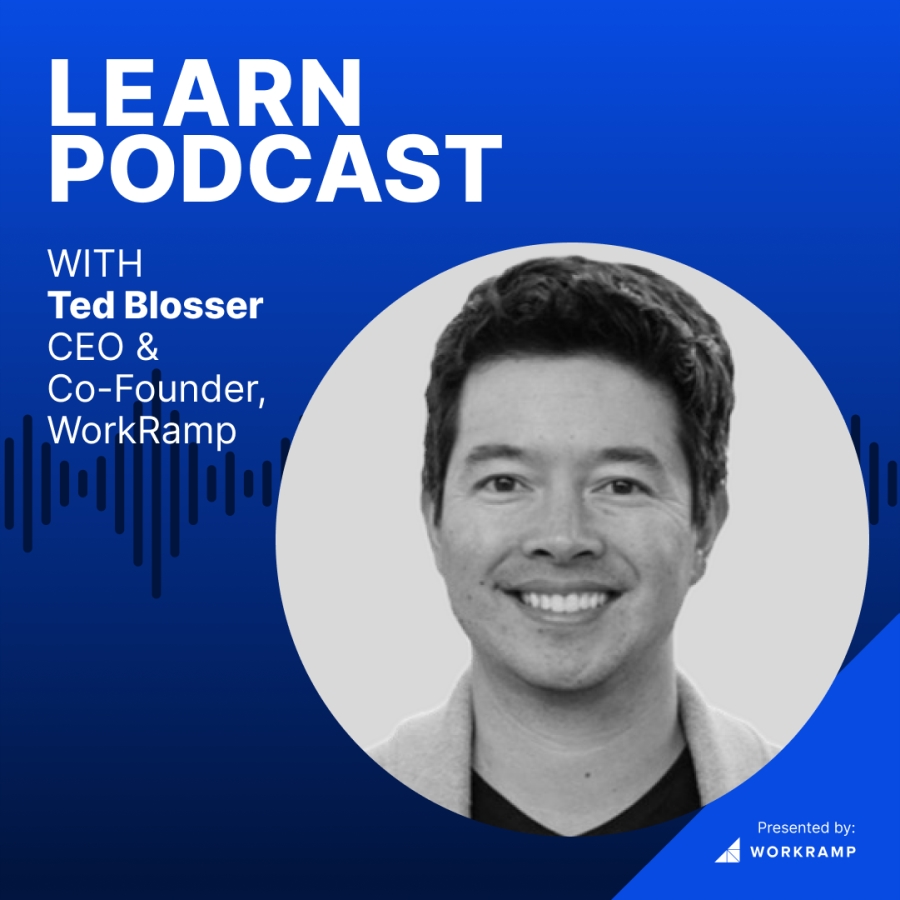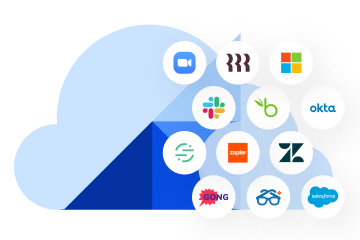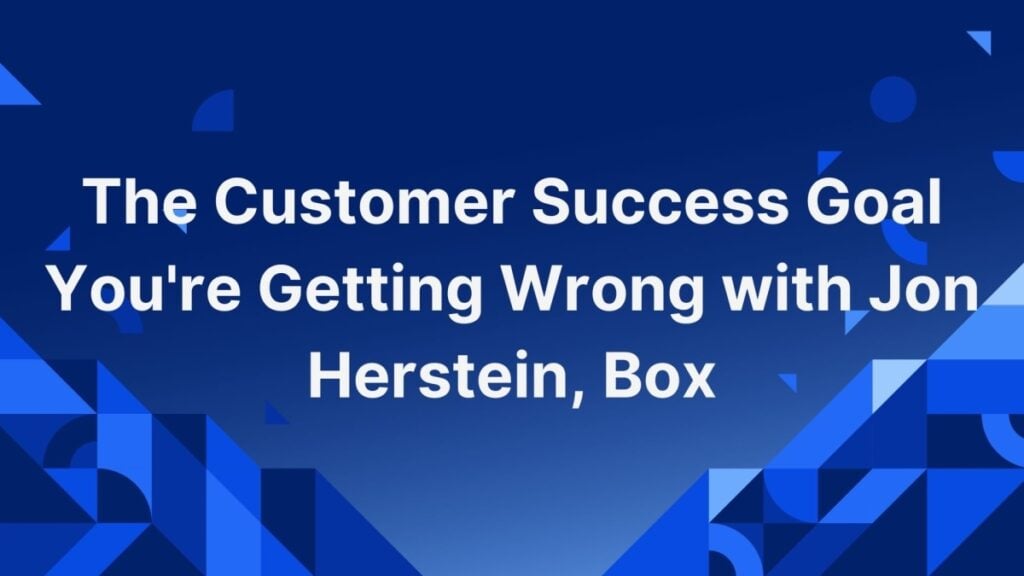-
 Resource Center
Resource Center
Discover enablement best practices and more in our resource center.
-
 Blog
Blog
Read the latest on enablement, learning and training trends.
-
 Podcast
Podcast
LEARN from the top leaders in SaaS.
-
 Videos
Videos
Watch videos and gain actionable insights from leading experts.
CEO Series: Top 8 Learnings From Working With the WorkRamp Board
The recent OpenAI drama involving Sam Altman’s firing and eventual rehiring—all in the span of a work week—highlights an important element of a successful business: board alignment.
When your executive team and board aren’t on the same page, it could complicate the health of your business.
“I’ve had good board meetings and bad board meetings. I've had misalignment and strong alignment, and through that, I’ve learned a lot about consistently and constantly improving our own board management,” says our host and CEO & Co-founder of WorkRamp, Ted Blosser.

On this episode of LEARN, we’re trying something different: CEO Series. Ted shares with you eight key learnings he’s picked up from his history working with a board to help you stay aligned and manage your relationship with your board members.
In this episode, you'll gain insights into:
- Aligning with your board is a critical part of business that many people from the outside don’t see
- Building relationships with your board, both in and out of the office, helps keep business running smoothly
- Growing and elevating your executive team is a reflection of you as a CEO
Tune in on your favorite podcast app to discover what you can do to nurture relationships with board members.
Timestamps
[02:42] Learning 1: Have good board management hygiene
[04:02] Learning 2: Do a mid-quarter board sync
[04:57] Learning 3: Build relationships with your board
[05:57] Learning 4: Have strong opinions loosely held
[07:36] Learning 5: Choose your board members wisely
[09:10] Learning 6: Take compensation seriously
[10:40] Learning 7: Bring someone in to support you
[12:36] Learning 8: Your executive team reflects you as a CEO
Resources
Transcript
Ted Blosser: In our Series A and Series B, time periods, I did everything for board management.
I was getting all the data from Salesforce and from our BI system, and I created the deck from scratch and worked, enslaved away. On getting everything put together for the board meeting. And that was actually really burning me out. What was happening was I was focusing on the slides and on the data, and I wasn't focusing on the narrative or, basically, raising up one level to understand; hey, why do I want to get accomplished in the board meeting?
Ted: Hi, I'm Ted Blosser, CEO and co-founder of WorkRamp, where we're redefining the corporate learning space with the world's first all-in-one learning cloud for employee and customer learning. Welcome to the LEARN Podcast, where we learn from the biggest leaders in SaaS and hear what makes them successful.
Hope you enjoy the show.
Ted Blosser: We're going to try something new for this episode. This is going to be our first monologue episode Of a series we're going to try where I want to give some perspectives on Different things you can encounter when building a company or building a startup and scale up when go through different topics ranging from things like leadership development, all the way out to, learning and enablement, into today's topic, which is going to be all.
Around something really relevant, which is board management. And the reason I want to talk about board management today is we've all kind of seen the, open AI, saga that's played out recently. And it's really, brought it back to the forefront, how important it is to make sure you have strong.
Board alignment and board management, hygiene, with within your company. And so what I want to do today is I jotted down eight key learnings I've personally had after, working with a board over the last four years. I did a tally. We've had about 16 board meetings over the last four years. And for background on WorkRamp, we've raised about 70 million in venture capital.
We, uh, have, a board of six board members, two independent, two preferred board members and two common, board members, myself and my co-founder, and, we've had a lot of experiences. We've had good board meetings, bad board meetings. We've had misalignment. We've had strong alignment, and so we've seen a lot of it.
We haven't seen everything. We're not like a public company yet, but we have seen a lot of different variations, and we're consistently and constantly improving our own board management. And so I thought it'd be helpful today to go through these eight big learnings, and hopefully you get something out of it.
So. With that, let's get started All right.
Learning number one. This is probably the most basic one because it's fully in your control as a CEO and leader is have good board management hygiene. What I mean by that is the way you manage the board and the hygiene you have around that is a reflection on how they think you run the company.
So for example, if you have sloppy hygiene, they probably think you're running the company in a sloppy way. I'll give a specific example on how you can have good board hygiene. for me personally, I make it a consistent pattern where I send out. board, decks the Sunday night before every Wednesday board meeting.
So I give board members, essentially three nights, two full days to actually add commentary and questions. And I never miss that. And, that gives us the ability to have a very thoughtful discussion. When the board meeting comes, I look through that, board deck many times, clear it out for typos.
I'm very clear, communications through it, but that's an example of. making sure your hygiene is really good with the board and that, extends all the way to things like, emails you send to the board afterwards, board consents. Again, you just want to have really good board hygiene all around because it's reflection on how they think you run the company on a day to day basis because that's your primary interaction point.
Number two, this might be, unique to WorkRamp. I've seen it with a few other founders and CEOs, but I would recommend having a mid quarter sync between board meetings. We do this at WorkRamp in the first week of month three of the quarter. So that means you get two months out of the way.
You kind of know how your results are going to turn out and you have a board meeting that first week of the third month. The reason you want to do this is the number one thing that boards don't want to be, presented with is surprises is you don't want to surprise the board heading into board meeting.
They want to know things early and often in the mid-quarter sink is a great way. To get in front of any issues or things you want to bring up in the next board meeting. Also, it's a great way to solicit feedback on what they would like to see in the next board meeting. So again, you can make sure you have strong alignment with the board.
Number three, build relationships outside of the boardroom. I do this through one one-on-ones with every board member and observer, and I typically have these, every other month. It's about 30 minutes every other month. if you have, let's say, a couple of observers or board members from one, VC or, investor.
You can do those at the same time. This takes a little bit of extra time, but it's not too much time, but it's critical to align, on a personal basis outside of the boardroom. You can get to know them at a personal level, learn about their family, their friends, what drives them, what motivates them.
The one thing you learn at the board level is that everyone has slightly different motivations and you need to make sure you understand those motivations. And also, you need to make sure that they understand your motivations and it's hard to get that across in the boardroom setting. So, I highly recommend building these relationships outside the boardroom.
Again, it takes a little bit of extra time, but totally worth it in the long term.
Let's go to number four. There's a phrase my co-founder uses that, he's borrowed, I think from the Amazon leadership, but he calls it have strong opinions, but loosely held. I've always had this struggle, During board meetings of, Hey, what is the demeanor you want to bring into board meetings?
I would say early on in our series, a series B, I carried a lot of the board meetings in a way where there were open discussions where I would say, Hey, here's a topic. I have just some thoughts on it, but I want to get your thoughts. And what I realized is that board members have very little context. They come in once a quarter.
They don't know as much as about the business as you do. And so it's very hard for them to give opinions on things that are not in day-to-day, whereas you live and breathe what's happening in your business. And so what I mean by strong opinions loosely held is. When you have a topic to discuss at the board level, you want to come in with a strong opinion.
Let's say it's a problem that you see; you should say, Hey, I have a solution to this problem. This is why I think it's a good solution, but can you challenge me on, other ways to think about this? And so again, if they want to challenge you based off their past experiences or the data you're presenting to them.
I call it loosely held because you want to not be stubborn about holding that strong opinion. You want to be able to take that data with a first principles approach and potentially change your mind. But again, I feel like the best way to do this is come into board meetings with a strong opinion on various topics, a high confidence on those, but, let them know that, Hey, we're open for feedback and debate.
Number five, this is called choose your board members wisely. this is almost self-explanatory, but, I think people overlook this, especially during the fundraise process. And so when you think about fundraising. you kind of have a choice, most of the time on who you want to bring into your company.
This is a lifelong marriage. And so you want to make sure that the people that you fundraise from, or even the independence, for example, that you bring into your board, that you choose them wisely. Not only that you want to also. plan out your board composition over time. You want to think one to two steps ahead.
One way to think about this, if you're not familiar with board management dynamics, you have different seats. Really? There's three types of seats. There's common seats. Those are, people who represent the company. Those are employees at the company. then there's preferred seats. Those are typically your venture capitalists or people putting money in the company and a high tech startup.
And you also have independents who. you bring onto the board that are neither common nor preferred, and you want to make sure the balance is set throughout the lifetime of the board. you don't want to get too overweight on preferred or, common, and you want to make sure that the board seats, really aligned to the company objectives over time.
Now, some people have more leverage like the Mark Zuckerberg's of the world. But even the best founders like Mark Benioff, he can get people who essentially, or even Aaron Levy that, that get onto the board or activist investors who hold a lot of shares who can push different board dynamics. So even the best of us have to watch out for that.
Number six, I call this take compensation seriously. This is a mistake I made early on, in our series, series a and series B phases. I was very lackadaisical when it came to comp. And what I mean by that is We just didn't take it seriously. When I wanted to look at our annual comp for our executives, I literally just kind of lobbed over an email and I said, Hey, here's the comp I think we should do.
And I got a rubber stamp via email, didn't have a live discussion about it. And then when we got to series C and we got a new board member, he was an ex CFO and CEO of a, of a. Large public company. And he pulled me inside. He said, Ted, you need to take compensation way more seriously. This is one of the highest leverage points a board has to, basically, change and adjust behavior within a company.
So they want to have strong input on that. And so it really hit me that, Hey, I need to take this more seriously. And so after hearing that feedback. What we did was in a future board meeting, we set out a whole section on just talking about executive comp. We ran through different models, different scenarios.
We solicited feedback, and we were able to align and agree on what was the best comp structure we can have, not just for the founders and the CEO and CTO, but also for the executive team. And so they want to give that up. Opinion. And as you get to larger, boards, and as you become like a public company, you have a full comp committee that focuses on this, but don't skimp on that in the early days,
Number seven, we got two more left.
These are both really fun. Number seven, I call this have a wing woman or a wingman, help you when it comes to board management. And I totally, didn't. Realize how much help this was until I got it instituted. So what I mean by this is in our Series A and series B, time periods, I did everything for board management.
I was creating the deck. I was getting all the data from Salesforce and from our BI system, and I created the deck from scratch and worked, enslaved away. On getting everything put together for the board meeting. And that was actually really burning me out. What was happening was I was focusing on the slides and on the data, and I wasn't focusing on the narrative or basically, raising up one level to understand, Hey, why do I want to get accomplished in the board meeting?
And so closer to our series C time, I brought in our VP of finance, and this is where you. You should bring your wing woman or wingman. This could be a COO, a chief of staff, someone that can come help you manage the board. And so our VP of finance, for example, he puts together the entire deck, grabs the data, he puts the meetings on the schedule to prep for the meeting.
And so it's really alleviated the tactical work that goes into managing the board. He sends out the board consents as well. After the meeting, this is where you have to send out the meeting minutes. But. All the other stuff. That's a little more tactical. You should offload and delegate to someone who can help you with that board management.
Obviously, you'll still need to edit some slides and add your commentary, but this gives you the ability to focus on the narrative and focus on the personal relationships within the board as you're heading into the board meeting. And it's highly recommended to do that. Once I did that, my life was 10 times better when it came to managing.
Board meetings.
All right. I'm going to go to the last one. This was a very, very important learning. And that's why I put it last year is, I basically, characterize this in a way that the executive team. Is a reflection of yourself to the board and what I mean by that is at the board meetings that you have, you're going to be rotating in your executive team.
You might have your Sierra or VP of sales, VP of marketing. They will come in and present to your board. One thing I didn't really realize is that as they watch and monitor and evaluate the executive team, it's not like they're doing that in a vacuum. It is a reflection of who you are as a leader. Just like in a sports team, the players on the court or on the field are a reflection of the GM picking the players.
No matter if they do well or they do poorly, it's going to be a reflection back to the GM. And so it's a really important analogy to think about that. The executive team you're hiring needs to be the. Best executive team you can have. If you bring in a strong executive, it's going to reflect really well on yourself.
And then we have strong confidence at that part of the business is going to do. Well, if you bring in a weak executive, they're going to pounce on that and they're going to know that, Hey, that is not the strong leader we need in that department. And it's going to have a negative reflection on yourself.
And so, it's a constant reminder that you need to make sure your executive team is always a plus, and there's really no way to hide a. Bad executive. And so it's a good encouragement to make sure you have the strongest executive team at all times because the board will sniff it out and it'll be a reflection on you as a leader.
So hopefully these eight learnings are really helpful if you're a leader or if you're hovering around the board, this gives you some good insight into how to manage a board and ultimately the board. wants to be aligned with the company and the leaders want to be aligned with the board. And so hopefully this can help you, figure that out as well.
Hopefully, you enjoyed our first monologue episode of the LEARN podcast. We'll have these again, periodically covering many different topics and learnings that we're seeing, in running a company here at WorkRamp. And we'll catch you at the next episode.
Thanks for listening to the LEARN podcast. If you're a fan of the podcast, do us two favors. One is to subscribe to it so you can get the latest update of our most recent episodes and write a short review of the podcast. This helps us get discovered in the broader podcast community. Thanks again.

_Nav.png?width=360&height=240&name=Employee_LC)_Nav.png)
_Nav.png?width=360&height=240&name=Customer_LC)_Nav.png)





